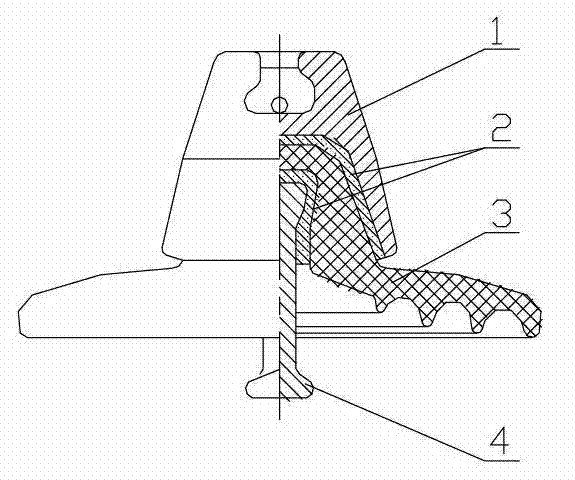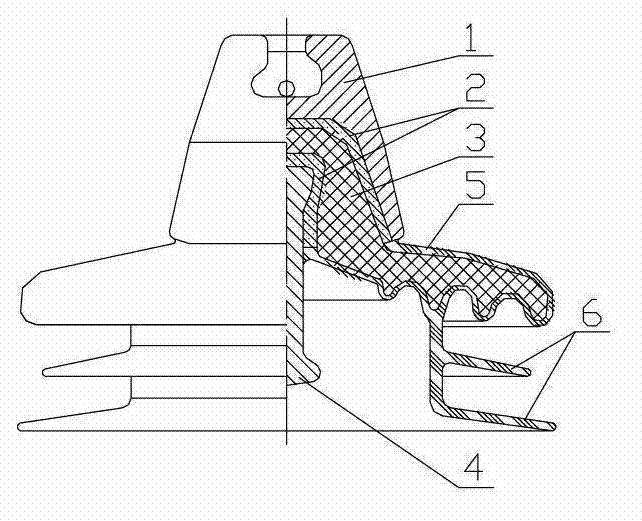Ceramic composite insulator, mould and manufacturing process
A technology of porcelain composite insulators and porcelain insulators, which is applied in the field of power transmission and transformation, can solve the problems of failure to maximize the improvement of pollution resistance, the joint surface cannot ensure no air gap channels, and insufficient electrical insulation, so as to achieve reliable electrical performance, Good insulation performance and strong combination effect
- Summary
- Abstract
- Description
- Claims
- Application Information
AI Technical Summary
Problems solved by technology
Method used
Image
Examples
Embodiment Construction
[0016] Figure 1-5 Middle: 1. Steel cap, 2. Adhesive cement, 3. Porcelain parts, 4. Steel feet, 5. Rubber sheath, 6. Rubber shed, 7. Outer sheath clearance, 8. Shed clearance, 9. Left module, 10, right module, 11, lower module, 12, inner sheath gap.
[0017] Such as Figure 1-3 As shown, a porcelain composite insulator includes a standard porcelain insulator, a rubber sheath 5 and a rubber shed 6. The porcelain insulator includes a steel cap 1, a porcelain part 2 and a steel foot 4, and a steel cap 1, a porcelain part 2 and a steel foot. 4 are firmly fixed by bonding cement 3; the exposed outer surface of the porcelain part 2 of the porcelain insulator has a rubber sheath 5 tightly combined with the porcelain part.
[0018] The rubber sheath 5 has a rubber shed 6 integrated with the rubber sheath 5 at the lower end of the porcelain part 2 . The number of the rubber sheds 6 is 1 or 2. Such as figure 2 , 3 shown.
[0019] The materials of the rubber sheath 5 and the rubb...
PUM
 Login to View More
Login to View More Abstract
Description
Claims
Application Information
 Login to View More
Login to View More - R&D Engineer
- R&D Manager
- IP Professional
- Industry Leading Data Capabilities
- Powerful AI technology
- Patent DNA Extraction
Browse by: Latest US Patents, China's latest patents, Technical Efficacy Thesaurus, Application Domain, Technology Topic, Popular Technical Reports.
© 2024 PatSnap. All rights reserved.Legal|Privacy policy|Modern Slavery Act Transparency Statement|Sitemap|About US| Contact US: help@patsnap.com










